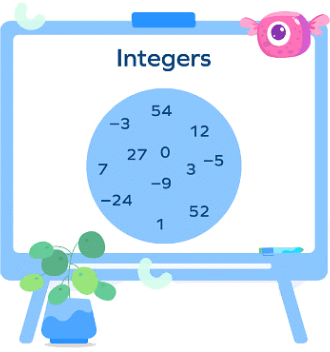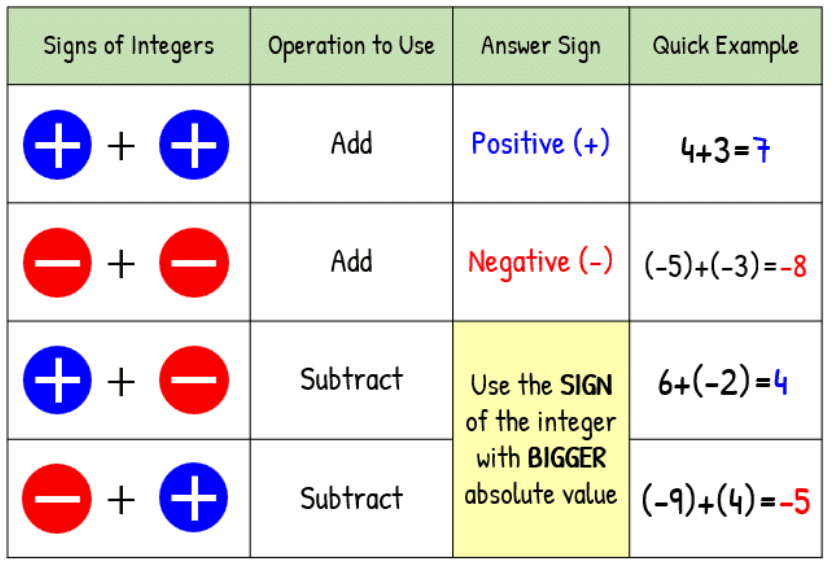Important Formulas: Integers | Mathematics (Maths) Class 6 PDF Download
(1) The numbers. . . , -4, -3, -1, 0, 1, 2, 3, 4,. . . . etc. are integers.
(2) 1, 2, 3, 4, 5. . . . are positive integers and -1,-2, -3,... are negative integers.
(3) 0 is an integer which is neither positive nor negative.

(4) On an integer number line, all numbers to the right of 0 are positive integers and all numbers to the left of 0 are negative integers.
(5) 0 is less than every positive integer and greater than every negative integer.
(6) Every positive integer is greater than every negative integer.
(7) Two integers that are at the same distance from 0, but on opposite sides of it are called opposite numbers.
(8) The greater the number, the lesser is its opposite.
(9) The sum of an integer and its opposite is zero.
(10) Rules for Adding Integers:

(11) To subtract an integer b from another integer a, we change the sign of b and add it to a.
Thus, a - b = a + (− b).
(12) All properties of operations on whole numbers are satisfied by these operations on integers.
(13) If a and b are two integers, then (a − b) is also an integer.
(14) The additive inverse of a number is what you add to that number to get zero. −a and a are negative or additive inverses of each other.
(15) All the properties applicable to whole numbers are applicable to integers in addition, the subtraction operation has the closure property.
(16) On a number line, the number increases as we move towards right and decreases as we move towards left. Hence, the order of integers is written as…, –5, –4, – 3, – 2, – 1, 0, 1, 2, 3, 4, 5…
(17) One more than given number gives a successor and one less than given number gives predecessor.
|
92 videos|348 docs|54 tests
|
FAQs on Important Formulas: Integers - Mathematics (Maths) Class 6
| 1. What are integers? |  |
| 2. How do you add integers with the same sign? |  |
| 3. How do you subtract integers? |  |
| 4. What is the rule for multiplying and dividing integers? |  |
| 5. How do you compare integers? |  |

|
Explore Courses for Class 6 exam
|

|


















